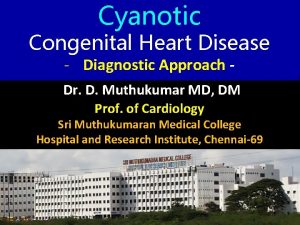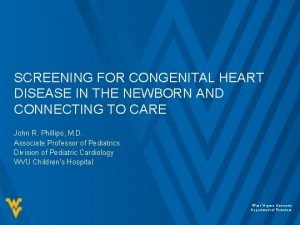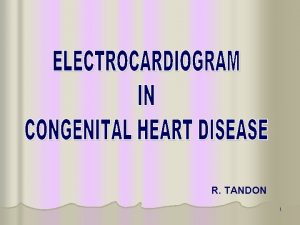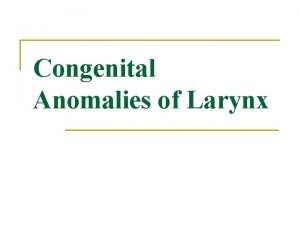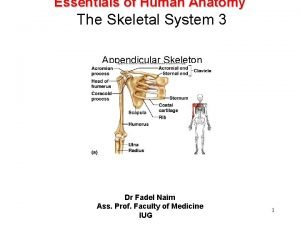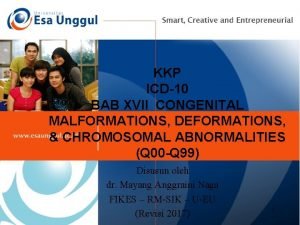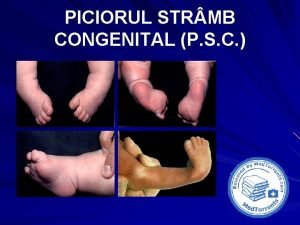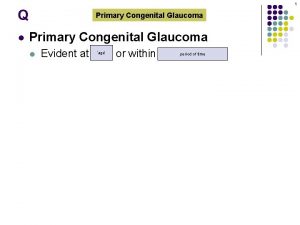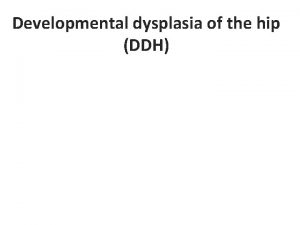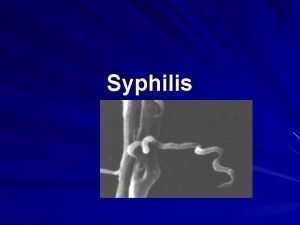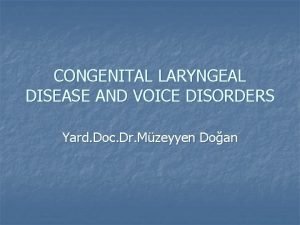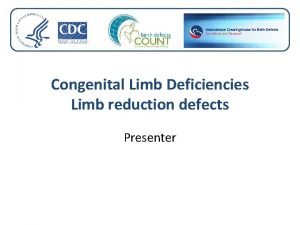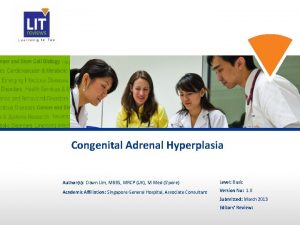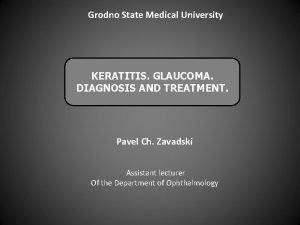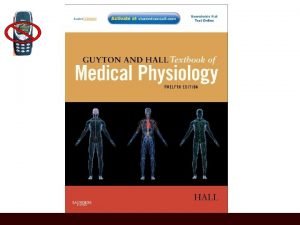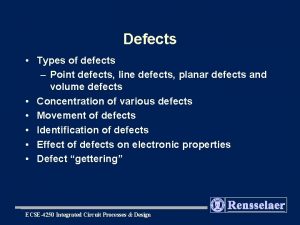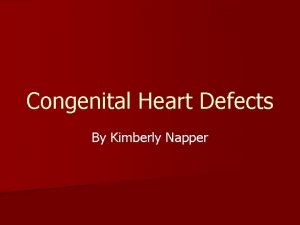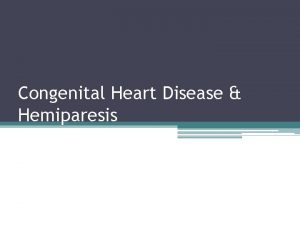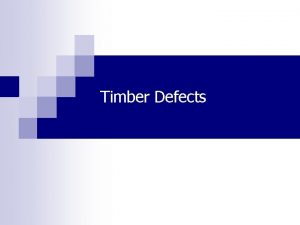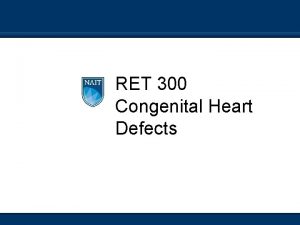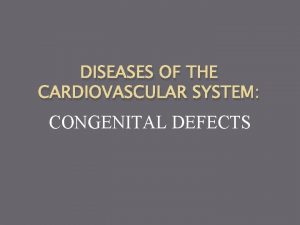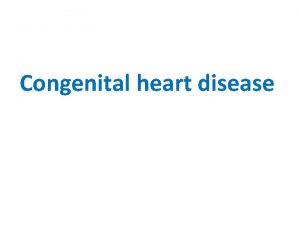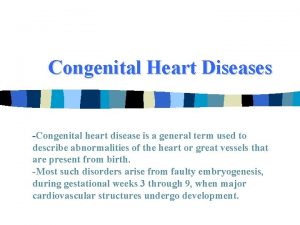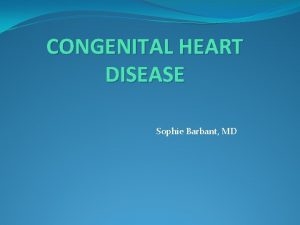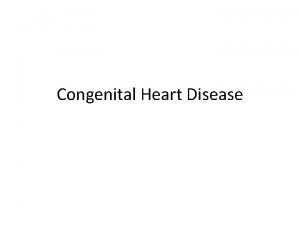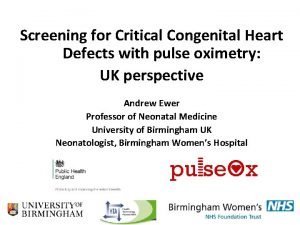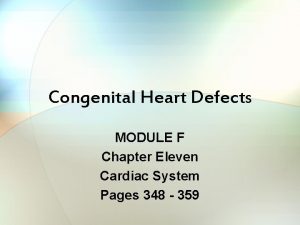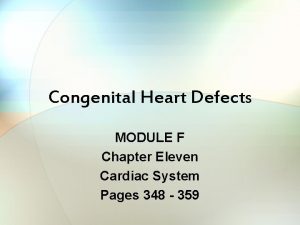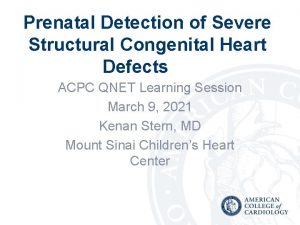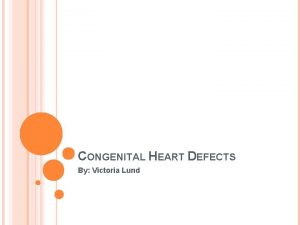Congenital Heart Defects Congenital Heart Defects Congenital Heart





















- Slides: 21

Congenital Heart Defects

Congenital Heart Defects

Congenital Heart Defects

Electrical Conduction System Sino Atrial (SA) Node – sup/post rt atrium Atrial Ventricular (AV) Node – inf rt atrium AV Bundle (of His) – sup IV septum L and R Bundle Branches – IV septum Purkinje Fibers – both ventricles

The Conducting System of the Heart

An Electrocardiogram (ECG) trace

The Electrocardiogram Recording of the electrical activities in the heart P wave = Atrial Depolarization QRS complex = Ventricular Depolarization T wave = Ventricular Repolarization

Systemic Vessels

Blood

Blood = Plasma + Formed (Cellular) Elements Plasma • ~ 55% blood volume • ~ 92% of plasma is water • High dissolved O 2 content • Dissolved proteins • Minerals, glucose, ions. Cells • ~ 45% blood volume • RBCs (~ 99% of cells) • WBCs (~ 1% of cells)

The Proteins in Plasma • Albumins – 60% of plasma proteins. • Globulins – 35% of plasma proteins. • Fibrinogen – For clotting reaction, forms fibrin. * serum = plasma without clotting proteins

Cellular Components RBCs (erythrocytes) ~ 99% of all cells. Hematocrit = % of blood occupied by cellular components. (packed RBC volume) Lacks nuclei, mitochondria and ribosomes. Anaerobic metabolism Life span = ~120 days

Scanning Electron Micrograph (SEM) of Erythrocytes or Red Blood Cells (RBCs) on the tip of a hypodermic needle.

White Blood Cells (Leukocytes) Granular Leukocytes • Neutrophils 70% of circulating leukocytes – Multi-lobed nucleus (3 or more), mobile phagocytes. • Eosinophils much less common – Bi-lobed nucleus with ‘orange’ staining granules. • Basophils relatively rare – Bi-lobed with dark staining granules, releases histamine.

Agranular Leukocytes • Lymphocytes primary cell of lymphatic system • T-cells attack foreign cells directly. • B-cells produce antibodies. • Monocytes – Large nucleus, differentiate into Macrophages.

n l e

• Platelet cells (Thrombocytes) – Fragments of cells (Megakaryocytes) for clotting. Never Let Monkeys Eat Bananas


Arteries Arterioles Capillaries Heart! Venules Veins

Control of the Heart • Basic rate established by pacemaker cells inside the heart (myocardium) – called “intrinsic myogenic control” • Modified by Autonomic N. S. (ANS) – Para: decreases rate via the Vagus n. X. – Sym: increases heart rate and force of contraction via cardiac accelerator n.

The Autonomic Innervation of the Heart
 Tet spell
Tet spell Congenital heart defect
Congenital heart defect Canadian congenital heart alliance
Canadian congenital heart alliance Eisenmenger syndrome
Eisenmenger syndrome Congenital heart disease pda
Congenital heart disease pda Murmur in asd
Murmur in asd Congenital heart
Congenital heart Congenial
Congenial Congenital
Congenital Congenital flat foot
Congenital flat foot Kode icd 10 malformasi anorektal
Kode icd 10 malformasi anorektal Codivila
Codivila Haab's striae
Haab's striae Congenital rubella syndrome triad
Congenital rubella syndrome triad Horizontal
Horizontal Background
Background Congenital voice disorders
Congenital voice disorders Congenital rubella
Congenital rubella Congenital limb deficiency
Congenital limb deficiency Dr dawn lim
Dr dawn lim Congenital glaucoma
Congenital glaucoma Guyton
Guyton



